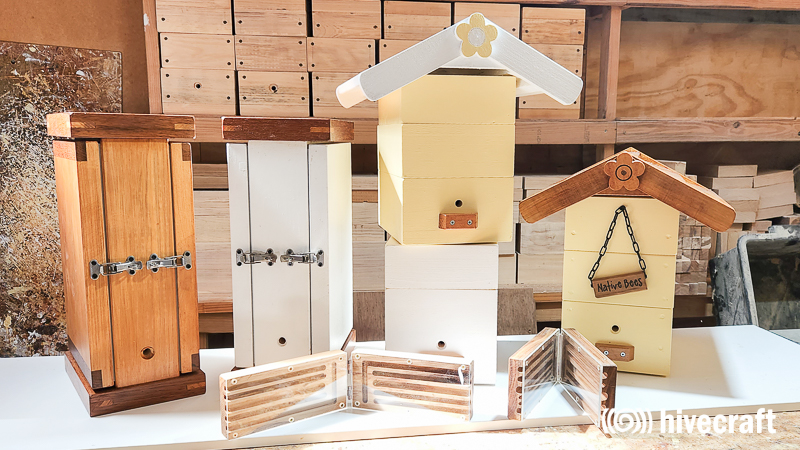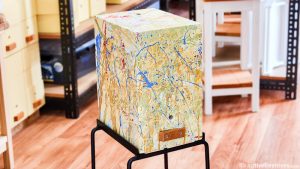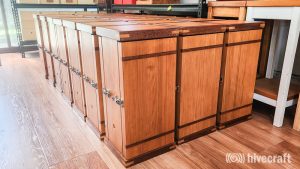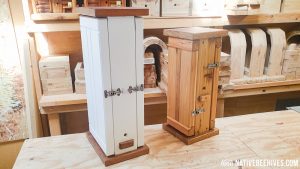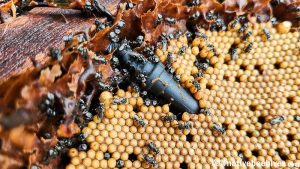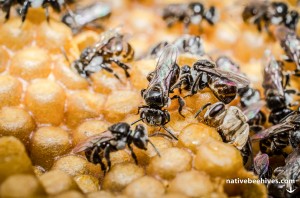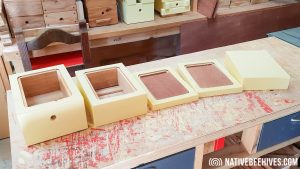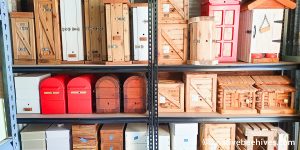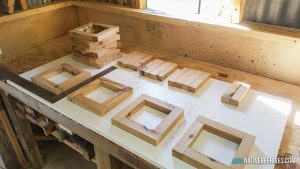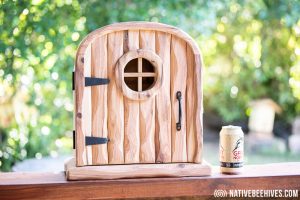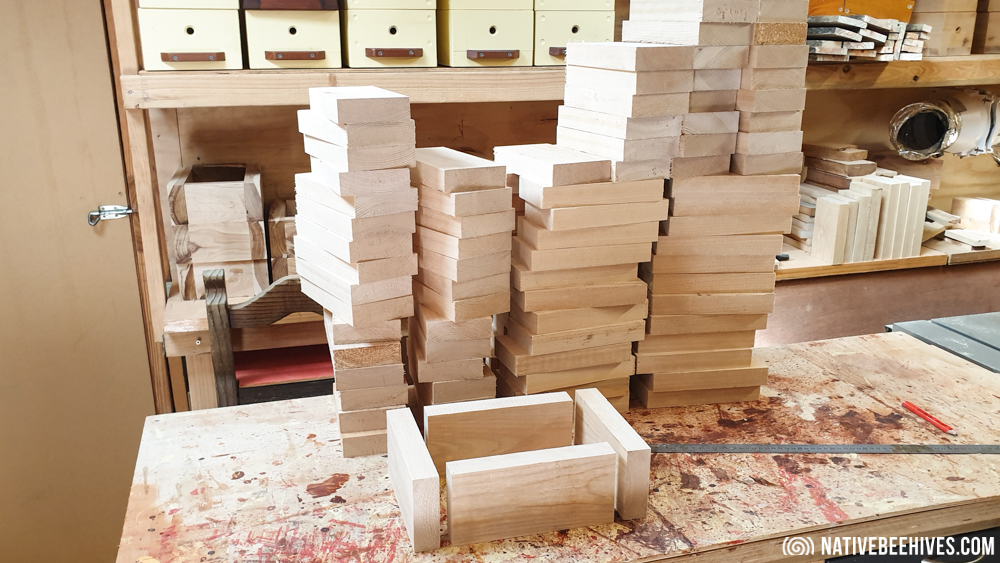
Should you start building your own boxes or just buy them?
Many new hive owners contemplate that question and probably never work out what to do or waste money heading in the wrong direction.
Buy boxes?
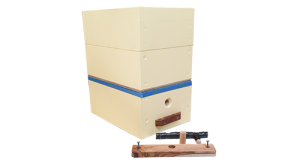
- If you’ve just got your first full native bee colony and aren’t really sure what your plans are for the future then it might be best just to purchase the first two or three empty boxes as you need them
- If you plan on having 2 to 5 colonies in your yard then definitely just buy boxes
- Even paying $100 to $175 per box could be a lot cheaper than buying appropriate tools and spending the time building boxes. Say you bought ten boxes over ten years, it might still be cheaper than buying the tools to make a nice box and materials. You could get by with cheaper tools of course. I personally advise against buying certain cheap tools
- If you have no tools or no interest in woodworking, it’s usually best just to buy good quality boxes and save yourself time and frustration
- If you’re not sure about the design and construction of a box it might be best just to buy one and then you can look over it and copy it or even make your own individual design
- Most well known suppliers have years of experience with Native Bees and making the boxes so can supply a good quality box that is all ready to go
- People are often surprised with how much effort goes in to a simple box and get frustrated with it and end up with a poor result
- I’d like to assume that most box makers put a lot of time and effort in to a single box producing a quality result that they’re proud to hand to the buyer and don’t actually charge that much for their time
- Some box makers might charge a lot for a box, but would have spent thousands on quality tools and have years of experience
- If you have plans to increase your colonies and have no interest in making boxes you can probably get a box maker to supply a regular amount of boxes at a discounted rate, or buy in bulk.

Build boxes?
- After a few years and you’re still mad keen on creating more colonies then it might be worth reassessing your plans for future boxes.
- If you already have the tools then it might be more viable
- If you have experience or an interest in woodwork or box design then it will be more enjoyable and less frustrating
- Planning on expanding your colonies, 20 to 100? It might be worth making them
- Planning on making some money? This could be a reason not to build boxes, You have to enjoy it because you wont be getting rich as you could spend a lot on appropriate tools and processes and put in a lot of time and not be able to charge much for it. Some people come and go in the field, new people make a few and start selling them, then they fade away, I don’t know why, maybe they lose interest or realise how much is involved and move on to other things, so you have to enjoy it!
- You enjoy it? – go for it!!!
Tips for box makers…
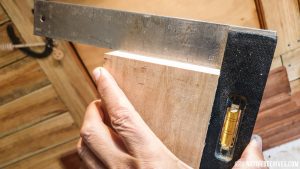
- For the big tools you use, buy good quality. They’ll be pleasurable to use. Cheap tools might get the job done but will always be a frustrating to use. I don’t believe the saying “A good carpenter can use cheap tools and still produce a good job”. My reply to that is – A good carpenter does not use cheap tools, they refuse to, because they know the frustration!
- Start out by making boxes for yourself and monitor the build quality over years. You might think your boxes are great when you’ve finished them but in one/two/six months they could have all warped.
- Wood like Cypress can be popular because it looks great new and is termite resistant but really needs plenty of time to “season” or dry out. It’s very unlikely you will find kiln dried Cypress. Cypress boxes should be made over many months and not over days or weeks. They will continue to warp and over many months. The frames will twist and the top lid and bases will cup.
- Test: Make some single frames, get them perfect so they sit against each other with no gaps and no rocking, then leave them alone for a month or two, then sit them against each other again and check the gaps and rocking. This will give you an indication of how stable the timber is.
- The same applies for the coatings. Testing should be done over a year or so. You’d want a good idea of what will happen to your boxes with bees inside and exposed to the elements.
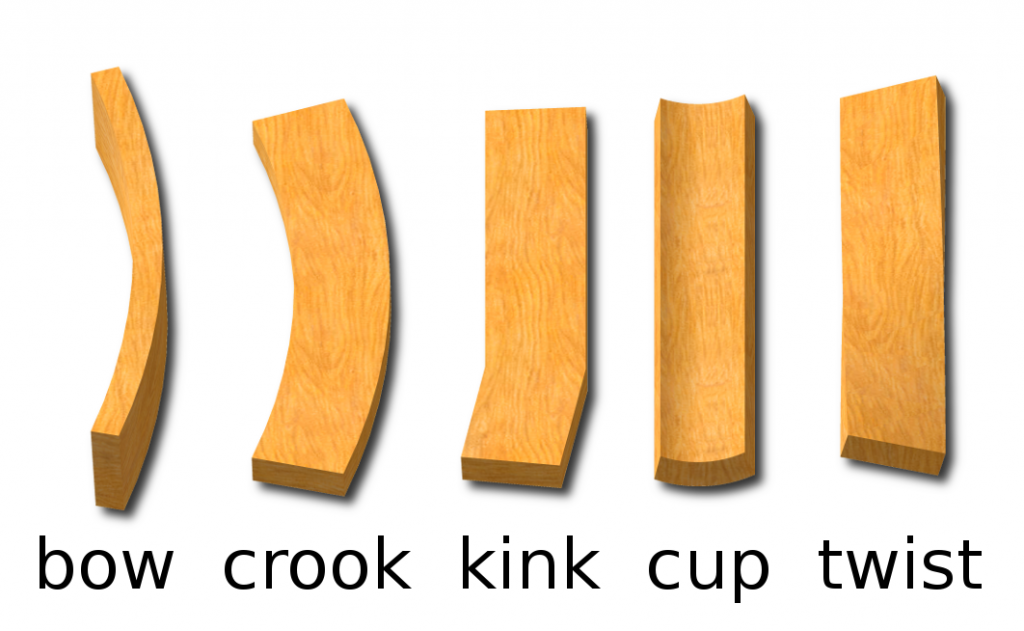
Have you got any suggestions to add to the lists here? I’m sure I’ve left some out? Send me an email here – https://www.nativebeehives.com/contact/

